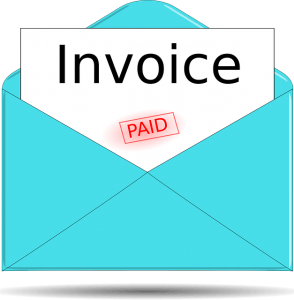Happy Wednesday and happy first day of fall! Hope you are doing well and that you’re having a good week so far. On Monday, we posted a blog about a very important topic – cash flow versus profit and the differences between them. Today we are going to go a step further and take a closer look at your business cash flow.
First, we are going to look at some mistakes that people make when it comes to their business’s cash flow. And then we are going to look at some of the best practices that you can do with your business cash flow.
5 Mistakes to Avoid with Business Cash Flow
Not Keeping Any Cash Reserve

This is something that you should remember when it comes to your business and your personal life. This way when you are faced with the unexpected, you have some money put away for an emergency.
Picture this: your company’s rolling along and the sales are doing well. You are thinking about the way that you might expand or grow, and you lose your best salesman to a competitor. Or maybe you are finding that your supplier has doubled their prices.
One of the biggest things that you want to do is to make sure that you have some money kept in reserve. It’s not a matter of if something is going to go wrong but when. This cash reserve can help with keeping you afloat. This can be built slowly if need be. However, it should be done.
Confusing Revenue & Profit

It’s not uncommon for business owners to believe that their business is successful. They see a lot of revenue that is coming in, your reputation in the industry is great and you have many new clients. However, revenue’s only one part of a business’s profitability equation.
When you have expenses that match or exceed the revenue will mean that you aren’t making money. When you are selling $2 million worth of product annually and you are spending that same amount, you’re breaking even.
If your strategy for cash-flow management doesn’t include you setting aside portions of the revenue ad your profit, there’s really no point.
Borrowing Money

This is something that a lot of business owners make. You have a business, and you have a shortfall, so you borrow the money to cover your bills. You may think to yourself, I’ll just borrow this until that big invoice is paid or until sales start picking up.
The real issue is that your business has problems with your cash flow. The expenses are way too high, or you are setting your prices too low. When you have a loan that has to be paid back, this is going to add to your problem rather than solve it.
When you are finding that your cash-flow management’s letting you down and you’re finding that you’re in the red temporarily, leave taking out a loan to the very last option. The better choice is running promotions for generating sales or looking at expenses and seeing what you can cut back on before taking out a loan.
Allowing Your Receivables to Slide

When you are in business, the point is to collect money from customers. So the last thing that you want to do is to wait around for your customers to pay your invoice, because if you become lax you can get behind.
You also don’t have to offer them 30 or 60-day terms. You’re able to make terms to match the needs of your cash-flow management.
Whether you are offering customers a discount when they pay in cash or pay immediately, tweaking those ways that you can handle your receivables will help with getting venue coming into the business a lot quicker. This will greatly help with ending your company’s cash crunch.
Not Charging Enough for Services

Your customers want to save money. But if you aren’t charging the right amount for your service or product, it’s going to be hard to make your company sustainable.
All of the expenses, the bills you’re paying each month, are costs that your revenue should cover. If that’s not happening, it’s time to consider charging your customers more.
It can be daunting to raise your prices, and it’s possible that some people might go elsewhere. However, don’t worry too much about that. Those customers who you’re losing likely aren’t the best customers you have. The ones that are going to stay with you are the ones who understand how much value you are giving them and they’re much more willing to pay you more to keep supporting your business.
When you are offering premium services, you are able to charge your customers according. You are going to find that your cash-flow management is a lot easier when you’re seeing more of it coming in.
8 Best Business Cash Flow Practices
Now that we have gone over some of the most common mistakes that business owners make with their business cash flow, we are going to look at some of the best business cash flow practices that you should follow to help your business to be a success.
Carefully Monitor Your Business Cash Flow
Make sure that you are paying regular and close attention to all of the metrics that you should keep an eye on. Here is an article that explains these metrics in an easy-to-understand way.
Frequently Make Projections

When you closely monitor the key business cash flow variables or data, you can make more accurate, better, and more updated projections of your future cash flow. It’s also going to help you with keeping the business financially stable.
Make sure you’re preparing an accurate, thorough forecast of your cash-flow. When you are forecasting your expenses and sales for a certain period, remember historical figures. These are things like the payment histories of customers, trends, averages and industry norm, along with current business and economic conditions. Project the cash outflows and inflows for the month that period. As you’re going through that budget period, make sure you’re comparing and updating the budget based on the true monthly performance.
You should include the net cash position of the company. This is the cash that you have at the period’s beginning + the cash inflows that you estimate – the cash outflows that you have estimated = your net cash balance.
Identify Any Issues Early On

When you identify an issue sooner, the easier it’s going to fix and the better it will be. For example, when you think that you’re going to have to ask the bank for flexibility or lenience, they are going to be more likely to agree to help you if you don’t ask at the last minute.
Have an Understanding of Basic Accounting

When you know basic business accounting’s key concepts, reading and understanding financial statements will be simple for you. You also will have an easier time of monitoring your business’s financial health and being sure that you’re cash-flow positive.
Have a Backup Plan for Emergencies

You never know what is going to happen which could leave you close to a crisis with y our cash flow. A well thought-out, clear back-up plan will help you with providing you some breathing room and some reserved cash if the day ever comes when you need it.
Grow Your Business Carefully

When your business is growing very quickly, it’s very risky. As you are ramping up to sell a lot more products or services, it’s first necessary to spend a lot more. You have to hire additional staff or purchase additional raw materials. If there’s too much time that goes between the increased outlay of cash and your increased sales, it’s possible that you’re going to find your business is cash poor. So you want to be cautious when you’re growing the business, and make sure you’re identifying financial risks. Then have a plan for business growth that will avoid lengthy delays in between your cash inflow and outflow, and that will pay a lot of attention to cash-flow management.
Send Invoices Quickly

When you delay sending out invoices to clients, it’s going to make you wait longer for receiving the payment for work. You should invoice a client when the work’s been completed.
Use Technology Effectively & Wisely

There are a lot of tools that can help you with managing the cash-flow of your business productively and easily. These are things such as software that is for small businesses like QuickBooks along with accounting services that are cloud-based.
We hope that you have found our blog to be useful and helpful when it comes to your business cash flow. On Friday we are going to round out the week with a helpful post on helping your business be profitable. Have a great week until then and download our free pricing sheet!



